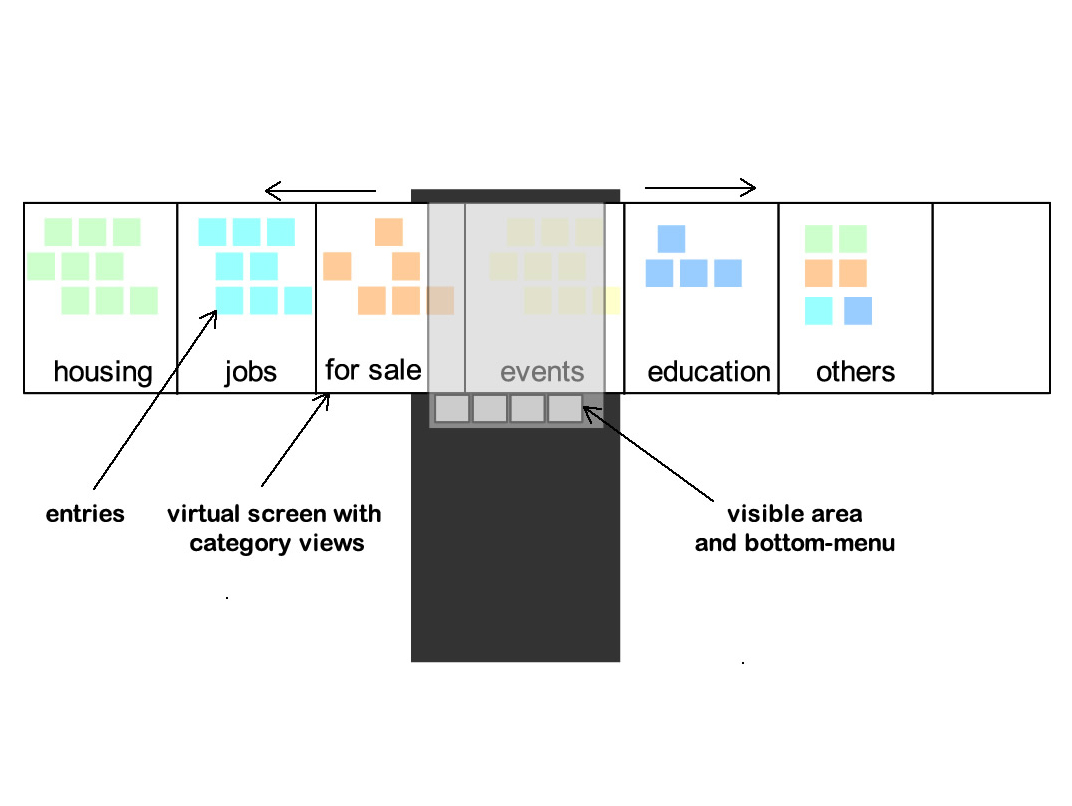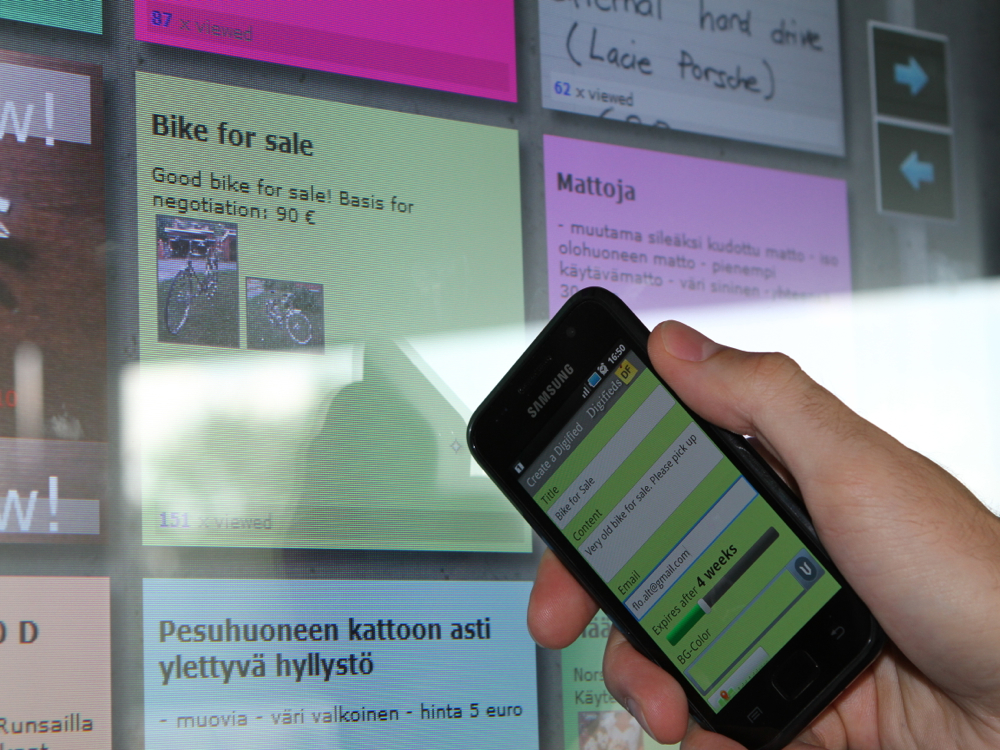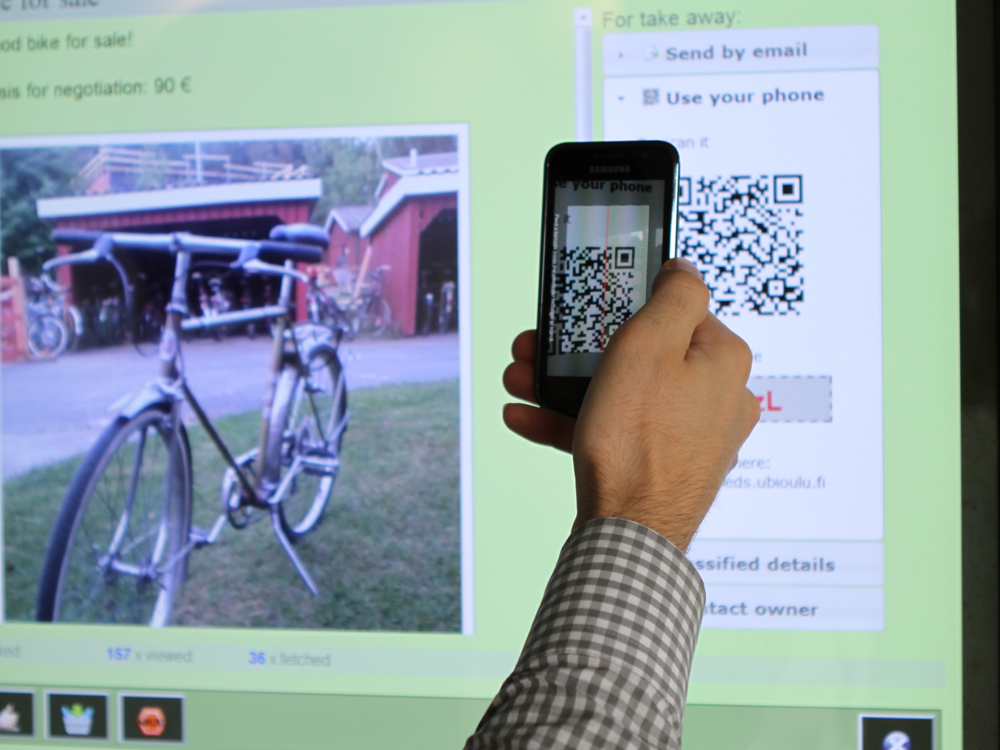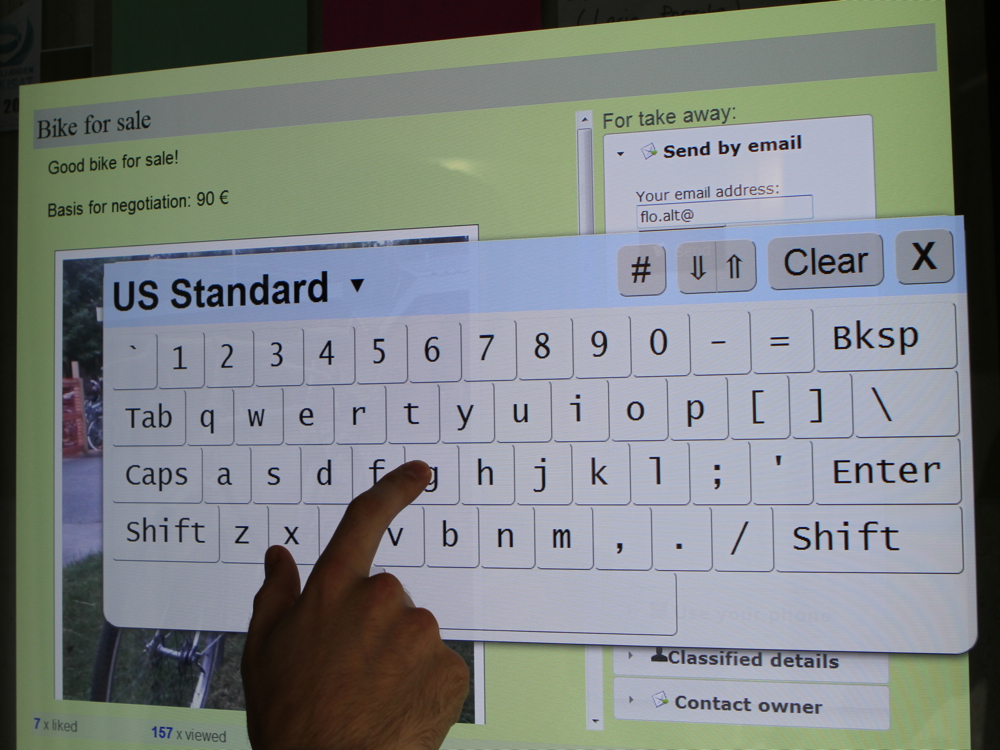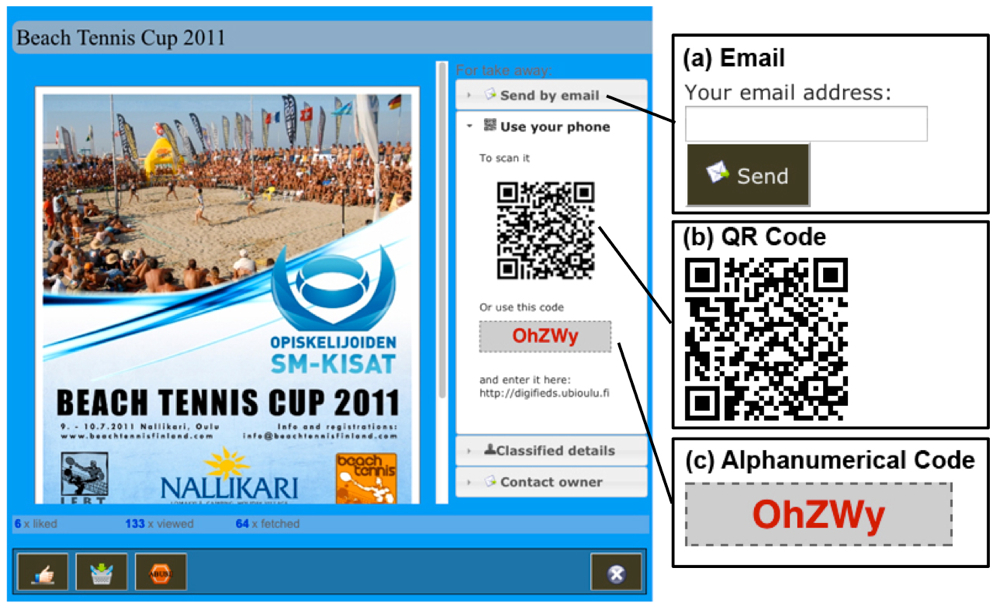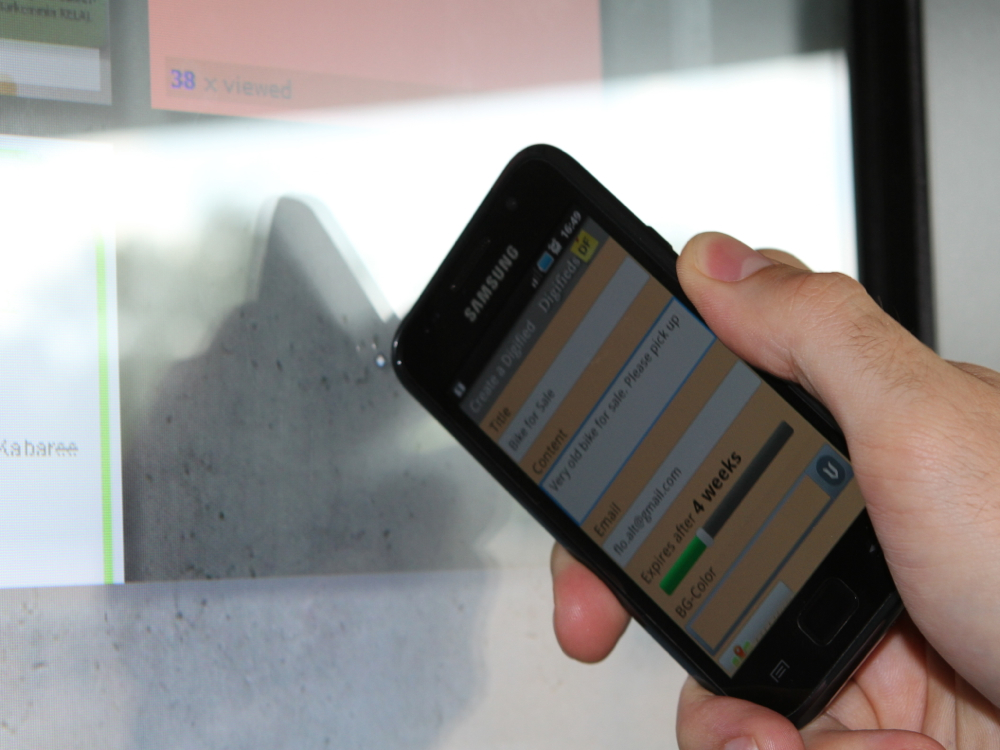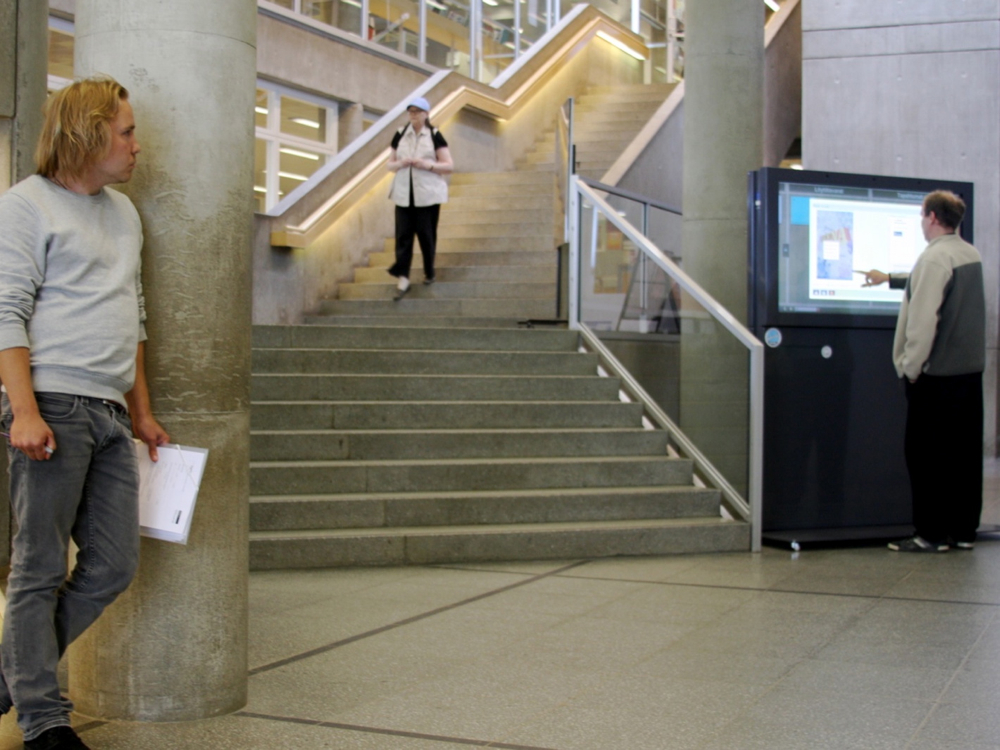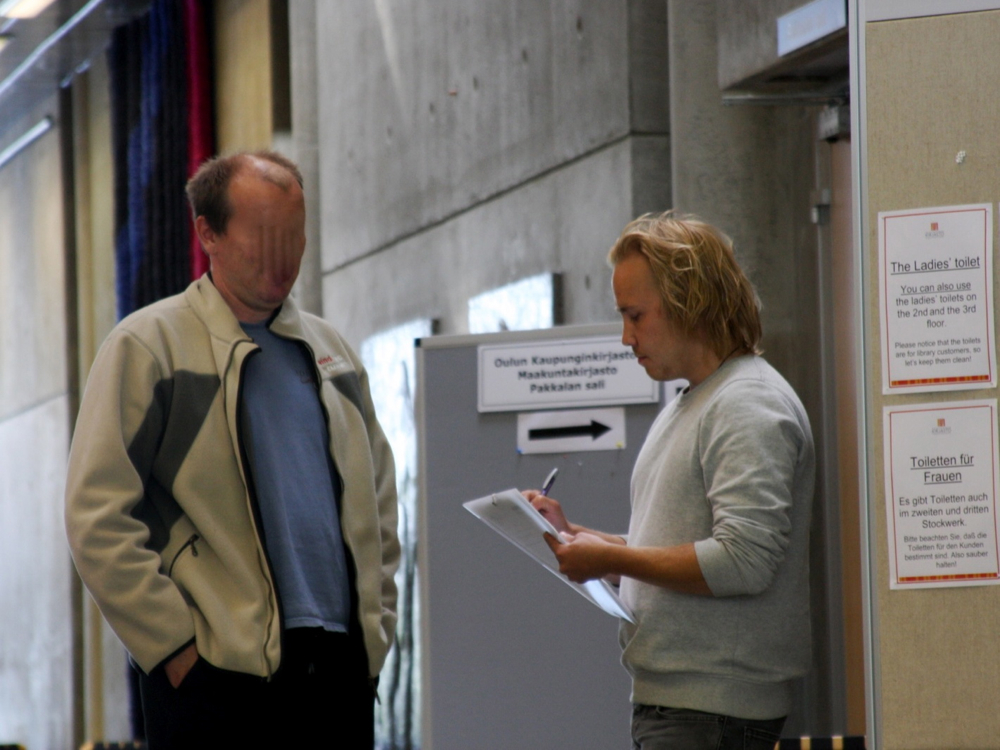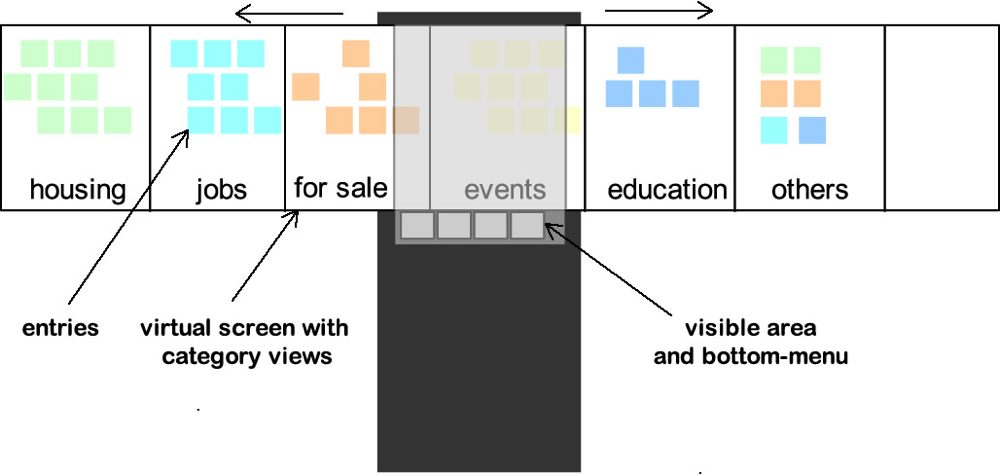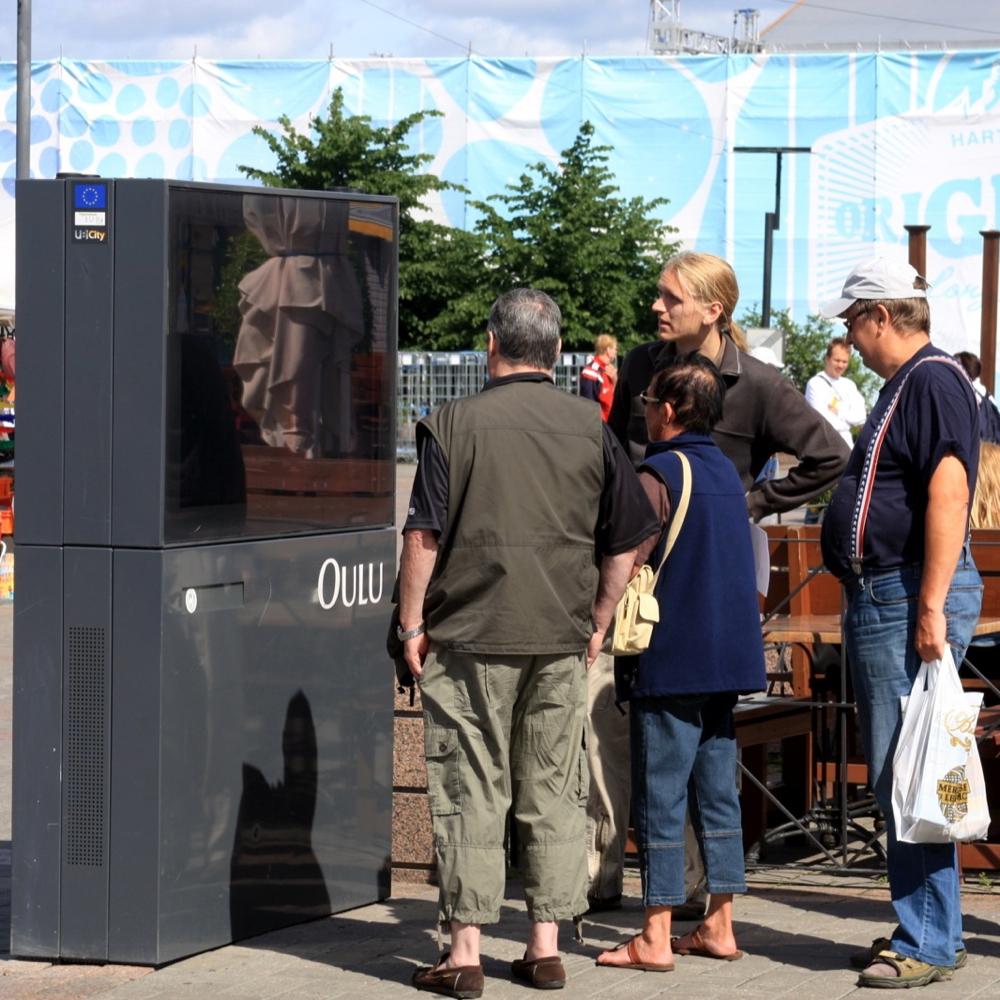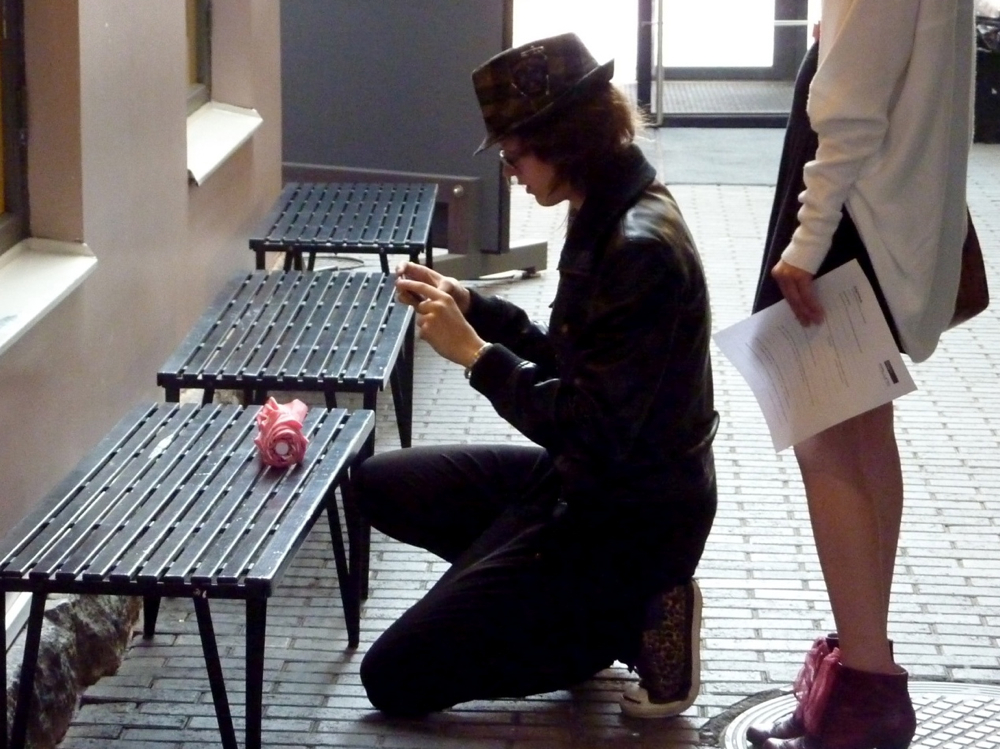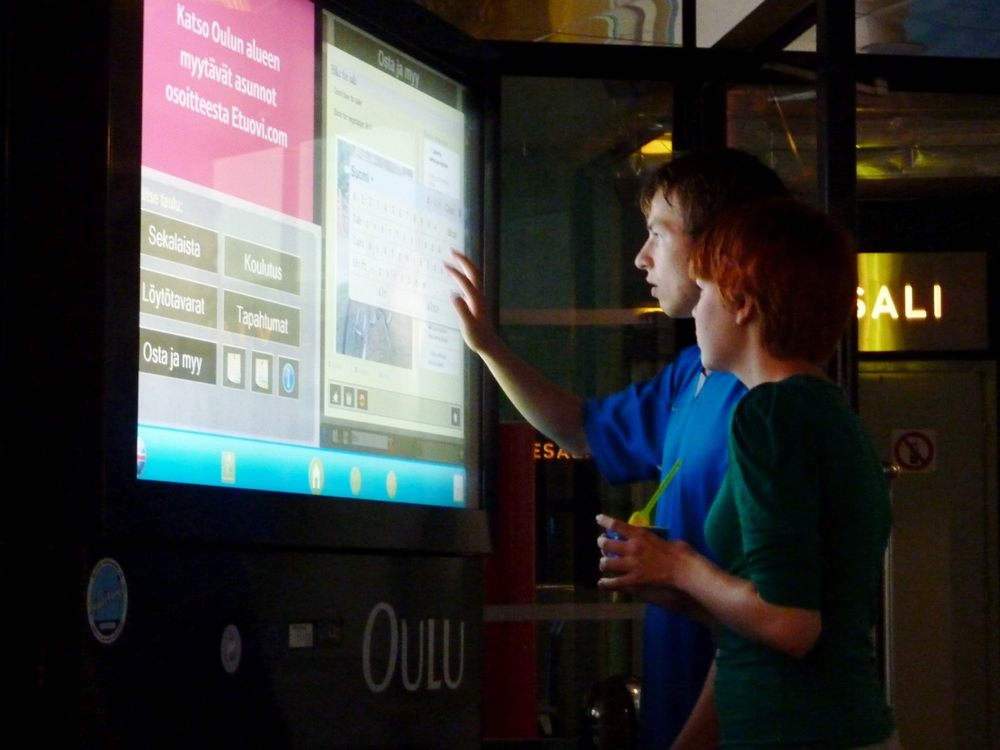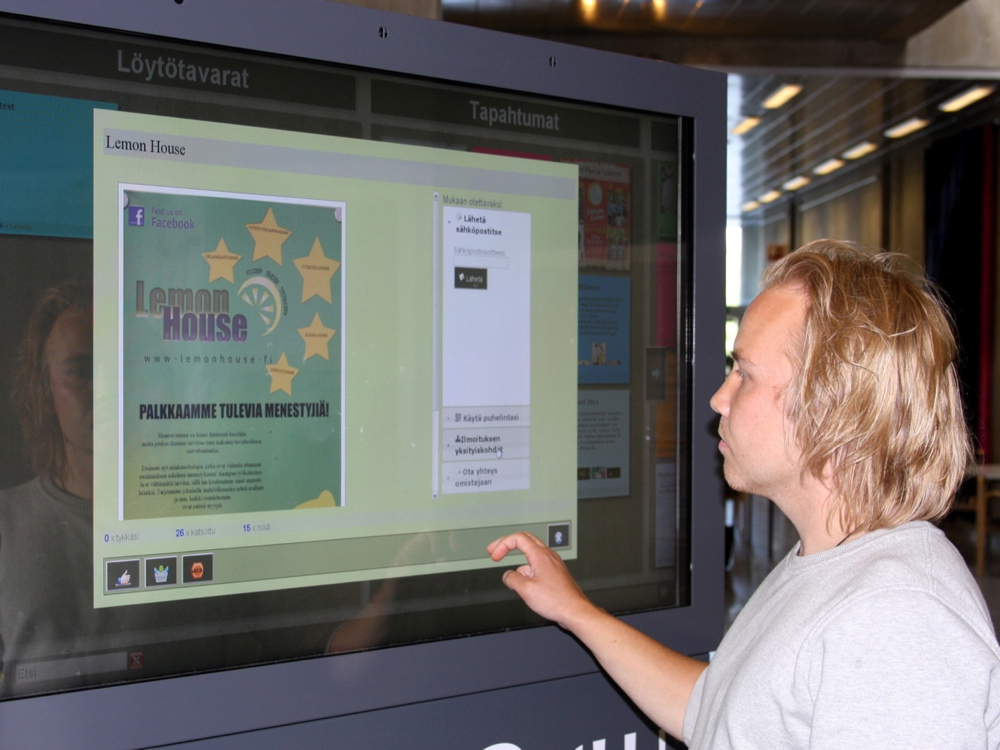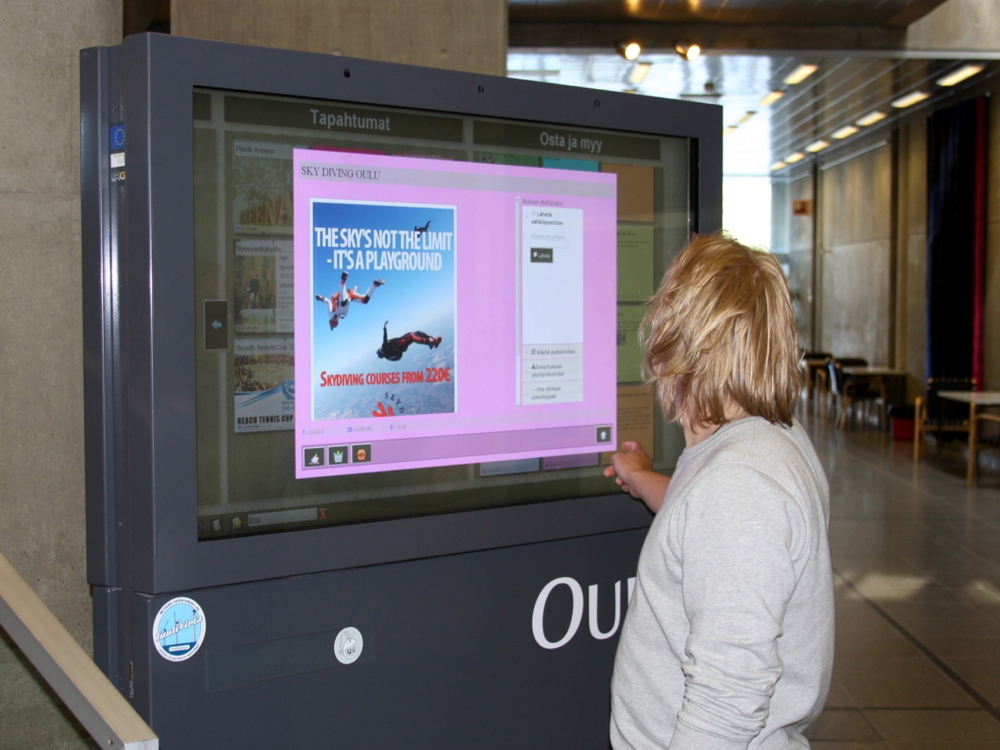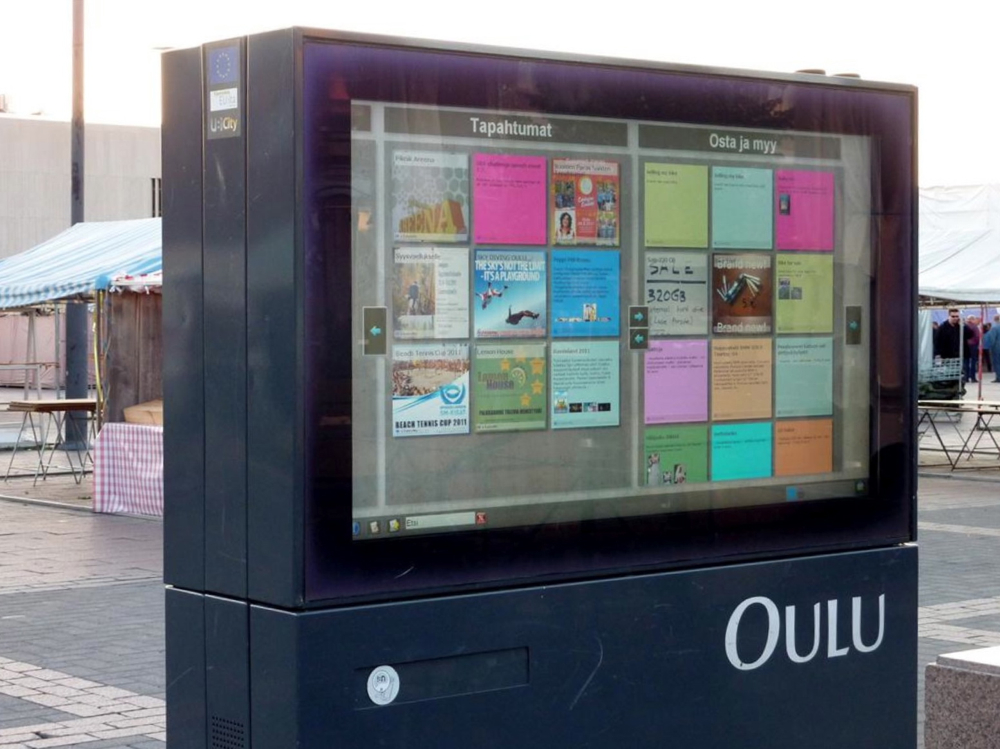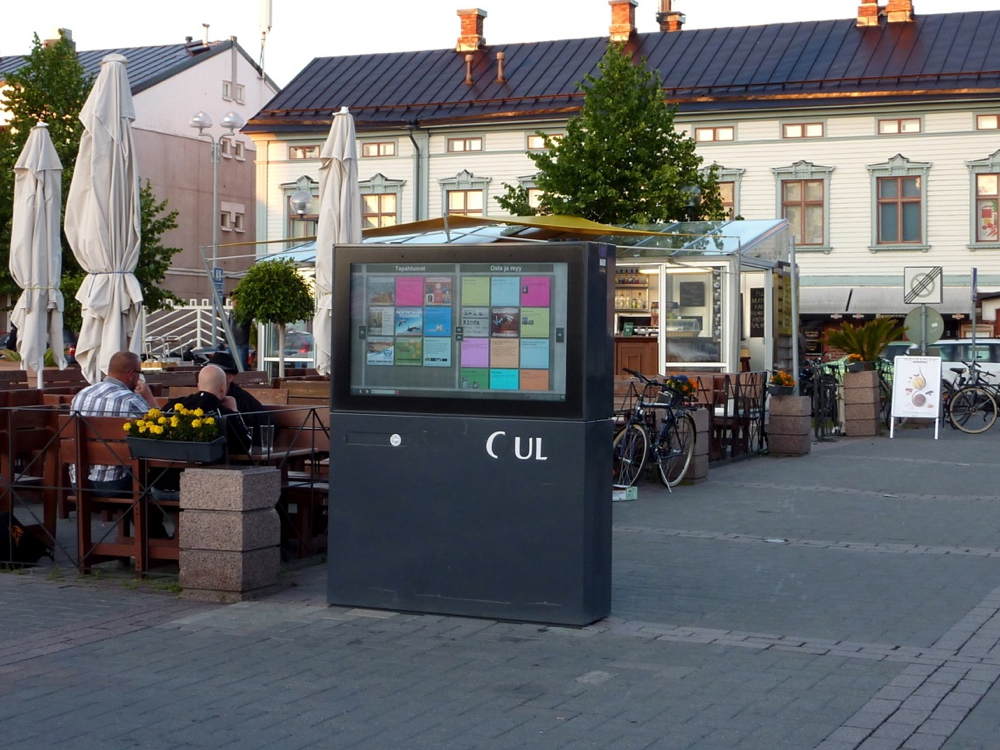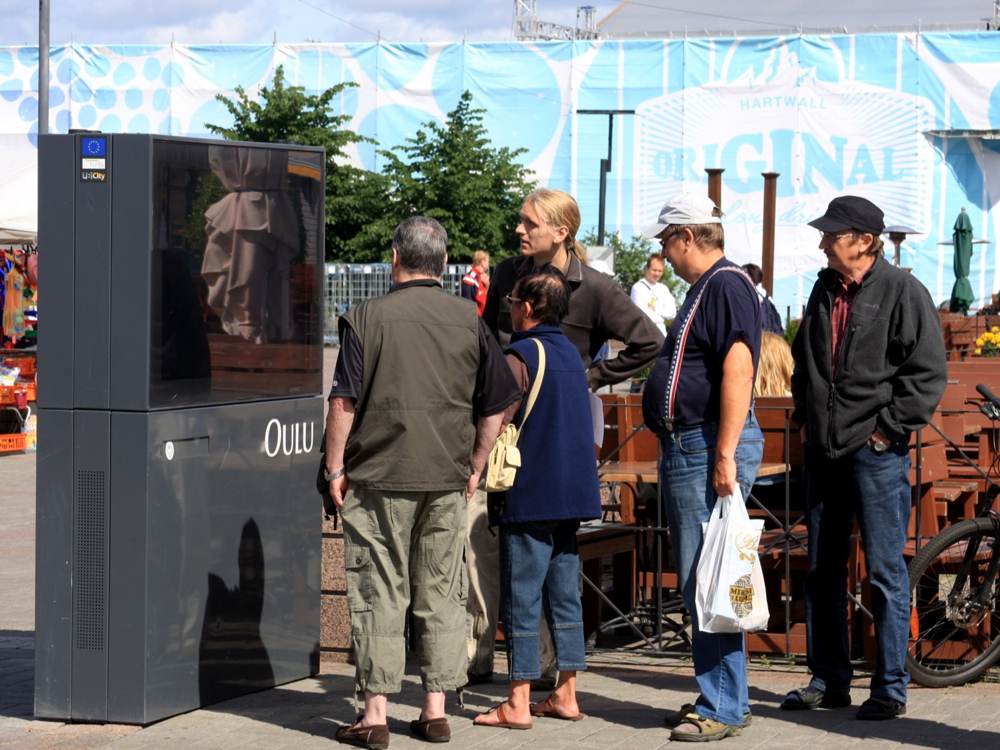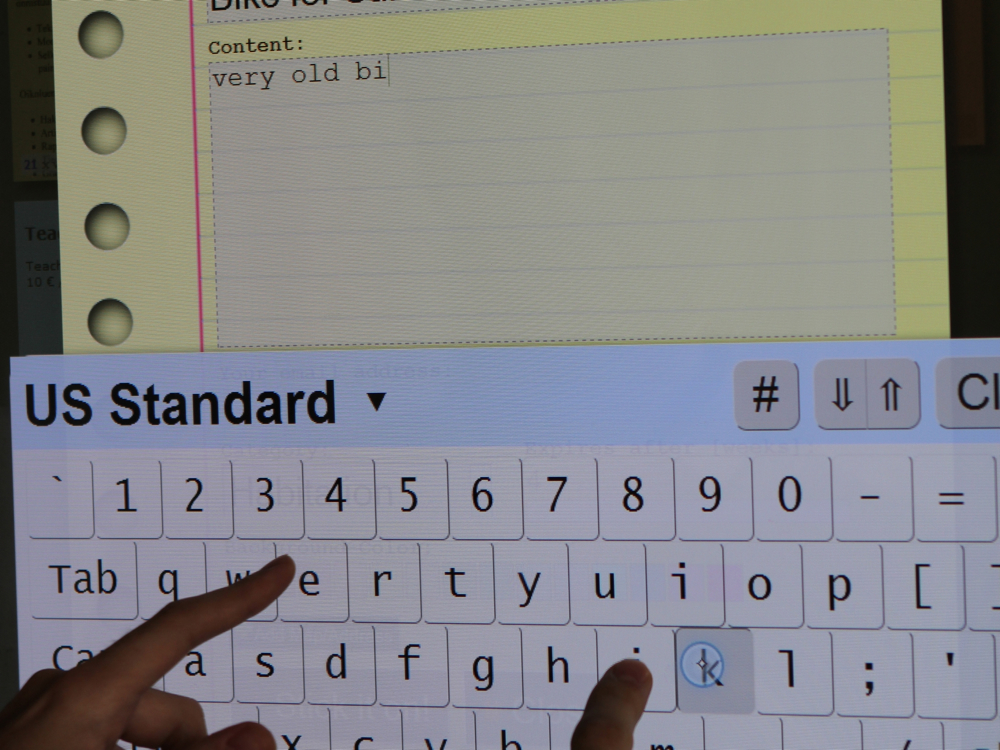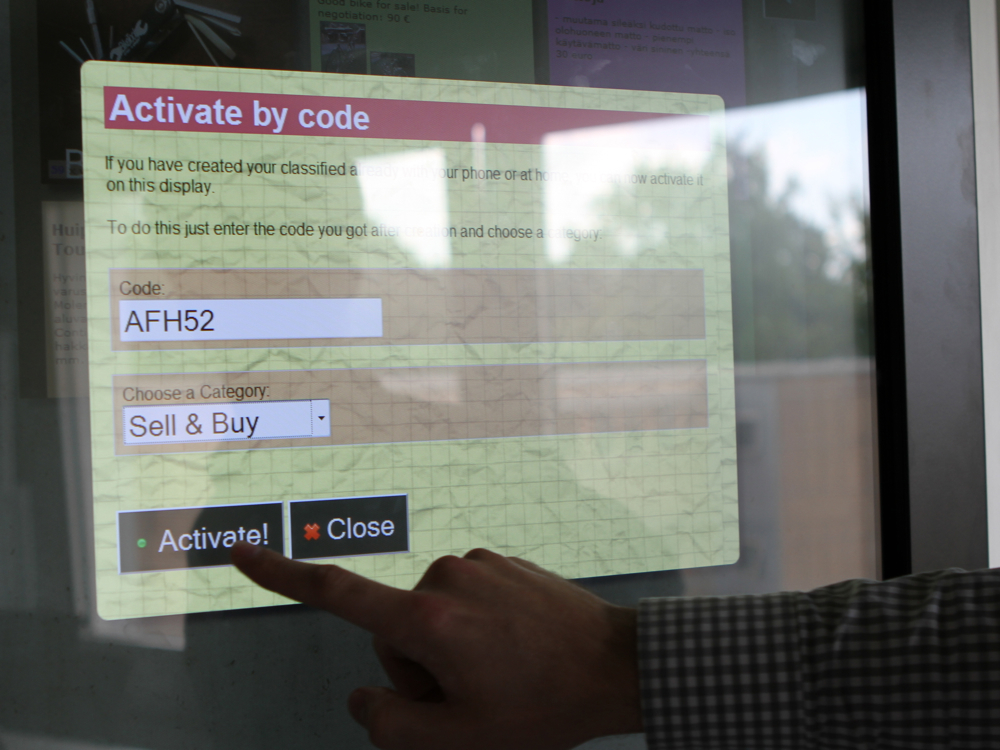Abstract
Public displays are becoming a ubiquitous resource in the urban environments due to significant price drops of large LCD panels. However, most public displays are still displaying simple advertisements in the form of slide shows or movie clips, instead of offering locally customized content that resonates with passers-by. So far, creating such customized content has been expensive. As a possible solution we present the concept and architecture for autopoiesic content, i.e., self-generative content that is automatically created by matching local context information with regular scheduled information into content that is highly localized. In this paper we report on the design, operation, and user experience of FunSquare – an application that uses autopoiesic content to present localized “fun facts” in order to strengthen the feeling of community.
N. Memarovic, M. Langheinrich, and F. Alt, “The Interacting Places Framework: Conceptualizing Public Display Applications that Promote Community Interaction and Place Awareness,” in Proceedings of the 2012 international symposium on pervasive displays, New York, NY, USA, 2012, pp. 71-76. |
FunSquare was developed in the context of the UbiChallenge 2011. The application generates so-called fun facts based on the display context and is intended to trigger social triangulation. The following paragraphs provide a brief introduction to the different aspects of FunSquare
Autopoiesic Content
The significant price drops in large LCD panels have led to a massive proliferation of digital public displays in public spaces. Most of these displays, however, simply show some form of traditional advertising, such as short commercials, animated presentations, or still images. Creating content that explicitly takes the particular location and surroundings of a space into account, in order to increase its relevance for passers-by, is typically infeasible due to the high costs associated with customized content. We argue that the concept of autopoiesic content (i.e., self-generative content) could significantly increase the local relevance of such situated public displays without requiring much customization efforts. As a sample application, this position paper outlines the concept and architecture of Funsquare, a service to realize autopoiesic content.
Connecting People Through Content
Large public screens are proliferating in public spaces. Today, most of them are standalone installations that display advertisements in the form of slides, short movies, or still images. However, it is not hard to imagine that these displays will soon be connected through the Internet, thus creating a global and powerful communication medium capable of providing rich, interactive applications. We believe that such a medium has the potential to foster connections within and between communities in public spaces. In this paper we present a research agenda for interacting places, i.e., public spaces that connect communities through public displays. We then report on our initial work in this space, in particular on using public displays for creating what we call identity cognition – increasing the sense of being connected between community members occupying the same space. We have investigated two options for achieving identity cognition: (a) through content that originates from the environment, and (b) through content that originates from people. Content originating from the environment portrays information about a display’s surrounding. For this type of content, identity cognition is usually being achieved implicitly by stimulating the effect of ‘triangulation’, an effect where particularities of the physical space act as links between people. Content originating from people, on the other hand, explicitly achieves identity cognition by promoting community values through content that expresses the attitudes, beliefs, and ideas of individual community members. We have built and deployed two public display applications that support identity cognition using environmentally-sourced content and people-sourced content, respectively.
The Interacting Places Framework
The proliferation of public displays, along with ubiquitous wire-less communication and sensing technology, has made it possible to create a novel public communication medium: open networked pervasive displays would allow citizens to provide their own con-tent, appropriate close-by displays, and increase their own aware-ness of a display’s surroundings and its local communities. We envision that such displays can create interacting places, i.e., pub-lic spaces that promote community interaction and place aware-ness. In this paper we describe our Interacting Places Framework (IPF), a conceptual framework for designing applications in this novel research space that we developed based on four distinct public display studies. Our IPF focuses on 4 elements: 1) content providers, i.e., entities that will supply content; 2) content viewers, i.e., people who are addressed by the content; 3) communication channels that deliver the content and range from inclusive, i.e., open-for-everyone, to exclusive, i.e., closed-group channels; and 4) an awareness diffusion layer that describes how community awareness building happens both explicitly, i.e., through con-tent tailored towards a specific audience, and implicitly, by ob-serving output for other people.
Images
Related Publications
M. Langheinrich, N. Memarovic, I. Elhart, and F. Alt, “Autopoiesic Content: A Conceptual Model for Enabling Situated Self-generative Content for Public Displays,” in Proceedings of the first workshop on pervasive urban applications, 2011. |
N. Memarovic, M. Langheinrich, and F. Alt, “Connecting People through Content – Promoting Community Identity Cognition through People and Places,” in Proceedings of community informatics, 2011. |
N. Memarovic, M. Langheinrich, and F. Alt, “Interacting Places — A Framework for Promoting Community Interaction and Place Awareness Through Public Displays,” in Tenth annual ieee international conference on pervasive computing and communications — workshop proceedings, Lugano, Switzerland, 2012. |
N. Memarovic, M. Langheinrich, and F. Alt, “The Interacting Places Framework: Conceptualizing Public Display Applications that Promote Community Interaction and Place Awareness,” in Proceedings of the 2012 international symposium on pervasive displays, New York, NY, USA, 2012, pp. 71-76. |
N. Memarovic, M. Langheinrich, F. Alt, I. Elhart, S. Hosio, and E. Rubegni, “Using public displays to stimulate passive engagement, active engagement, and discovery in public spaces,” in In proceedings of media architecture biennale 2012, 2012. |

